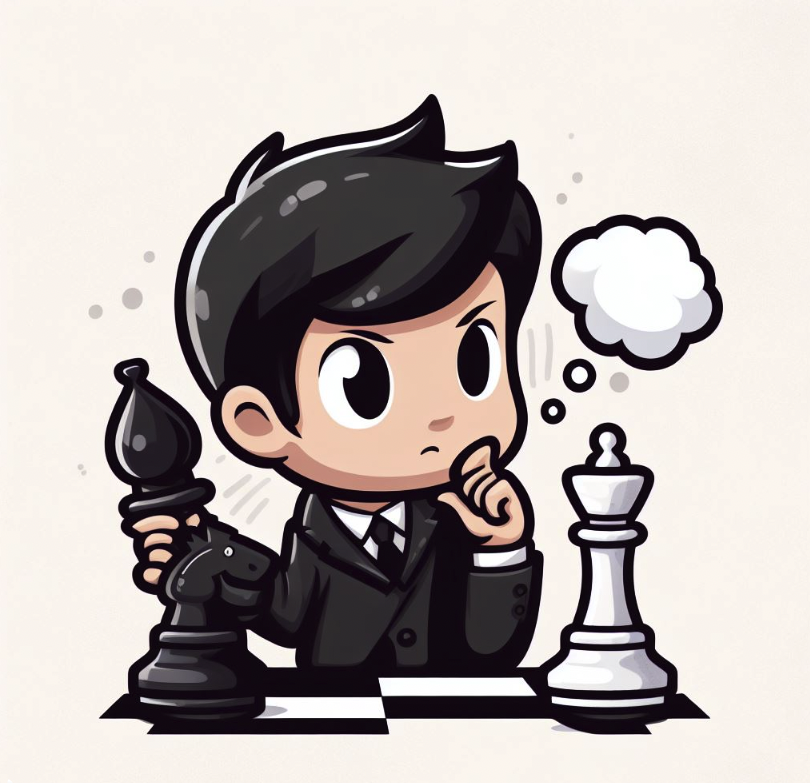Insufficient material in an instance in a chess game where there are not enough pieces left on the board to deliver checkmate, leading to a draw.
Here we will explore the meaning of insufficient material in chess, its implications, and how it can affect the outcome of a game.
Understanding Insufficient Material
Insufficient material in chess occurs when both players have limited pieces remaining on the board, making it impossible to deliver checkmate.
The insufficient material rule is one of the draw conditions in chess, alongside stalemate, threefold repetition, and the fifty-move rule.
It is important to understand the concept of insufficient material to appreciate its impact on the game.
Examples of Insufficient Material
Insufficient material can arise in various scenarios during a chess game.
Here are a few examples:
- A king versus a king: When both players have only their kings left on the board, it is impossible to deliver checkmate. This situation results in a draw.
- A king and a bishop versus a king: If one player has only a king and a bishop, while the other player has only a king, it is impossible to checkmate the lone king. This scenario also leads to a draw.
- A king and a knight versus a king: Similar to the previous example, if one player has only a king and a knight, while the other player has only a king, it is impossible to checkmate the lone king. Therefore, it results in a draw.
Below is an example of insufficient material – bishop and king vs. king:

Implications of Insufficient Material
The presence of insufficient material in a chess game has significant implications for both players.
Let’s explore some of these implications:
Draw as the Only Outcome
When both players have insufficient material to deliver checkmate, the game automatically ends in a draw.
This outcome can be frustrating for a player who had a winning advantage but was unable to convert it into a victory due to insufficient material.
However, it also provides an opportunity for the player with fewer pieces to escape defeat and secure a draw.
Strategic Considerations
Insufficient material forces players to adopt different strategies.
With limited resources, players must focus on positioning their remaining pieces effectively and maximizing their potential.
The ability to create threats and maintain a solid defense becomes crucial in such situations.
FAQs – Insufficient Material in Chess (Meaning)
1. What is insufficient material in chess?
Insufficient material in chess occurs when both players have limited pieces remaining on the board, making it impossible to deliver checkmate.
2. What are some examples of insufficient material?
Examples of insufficient material include a king versus a king, a king and a bishop versus a king, and a king and a knight versus a king.
3. What happens when there is insufficient material in a game?
When there is insufficient material, the game automatically ends in a draw.
4. Can insufficient material occur during any stage of the game?
Insufficient material happens at the end of the endgame.
5. How does insufficient material affect strategic considerations?
Insufficient material forces players to focus on positioning their remaining pieces effectively and maximizing their potential.
Creating threats and maintaining a solid defense become crucial in such situations.
6. Can insufficient material be used as a defensive strategy?
Yes, players with fewer pieces can use insufficient material as a defensive strategy to secure a draw against opponents with a winning advantage.
If a player is down a knight or bishop, if they can reduce the material down to that, it will be an automatic draw.
7. Can a player with insufficient material still win the game?
No, it is impossible to deliver checkmate with insufficient material.
The best outcome for a player with insufficient material is a draw.
8. Is insufficient material frustrating for players?
Insufficient material can be frustrating for players who had a winning advantage but were unable to convert it into a victory.
However, it also provides an opportunity for players with fewer pieces to secure a draw.
9. Are there any exceptions to the insufficient material rule?
No, the insufficient material rule is a fundamental aspect of chess and applies universally.
10. Can insufficient material lead to a stalemate?
No, insufficient material and stalemate are separate draw conditions in chess.
Insufficient material occurs when both players have limited pieces, while stalemate occurs when a player has no legal moves but is not in check.
11. How can players avoid insufficient material?
Players can avoid insufficient material in games by studying endgame strategies, and practicing piece coordination to avoid these types of drawn endgames.
12. Can insufficient material occur in online chess games?
Yes, insufficient material can occur in both over-the-board and online chess games.
The rules of chess apply regardless of the platform.
13. Is insufficient material more common in certain chess openings?
Insufficient material can occur in any chess opening, depending on the moves and exchanges made by the players.
It is not specific to any particular opening.
Summary – Insufficient Material in Chess (Meaning)
Insufficient material in chess refers to a situation where both players have limited pieces remaining on the board, making it impossible to deliver checkmate.
It is one of the draw conditions in chess and can significantly impact the outcome of a game.
Players must adapt their strategies and make the most of their remaining resources. Insufficient material often leads to quicker decision-making and time management becomes crucial.
While it can be frustrating for players with a winning advantage, it also provides an opportunity for those with fewer pieces to secure a draw.


